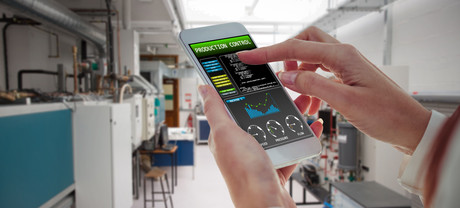How manufacturers can respond to the changing landscape and increasing costs

Australian manufacturers need to find alternative ways of doing business or risk being overrun by competitors with lower costs, according to Epicor.
“As the world has gotten smaller, Australian organisations face increased competition from international businesses,” said Greg O’Loan, regional vice president. “For manufacturers, rising energy costs and strong competition from overseas companies mean Australian companies need to continue to find efficiencies throughout the business. This must happen against the backdrop of Industry 4.0, which is a new way of manufacturing that leverages automation and data exchange through the Internet of Things (IoT) and cloud technology.”
Industry 4.0 is characterised by a new reliance on interoperability through IoT, information transparency through augmented and virtual reality, improved insights through analytics and business intelligence, and automation that leads to decentralised decision-making.
With traditional competitors mobilising into new areas, consolidation in the market, and external competitors entering the market, Australian manufacturers face significant challenges. Those that haven’t already upgraded to a so-called ‘smart factory’ as part of Industry 4.0 may find themselves disadvantaged compared to competitors that can leverage new technologies to dramatically increase efficiency, reduce costs and bring new products to market faster and more successfully.
“Businesses need to bring competitive products to market,” said O’Loan. “They can then consider leveraging non-traditional ways to market to protect their existing customer base and expand into new markets. Manufacturers that cling to traditional business models will find it hard to drive growth.”
No longer reliant on distributors and retailers to sell their products, manufacturers can now go straight to market themselves by adding e-commerce functionality on their website and realising higher margins on sales.
Manufacturers’ margins are under pressure because manufacturing is inherently energy-hungry. In the face of rising energy costs, these businesses need to make a choice. They can offshore their operations to a region with lower energy and labour costs. Or, they can invest in automation, such as using robots or device-to-device communication, which eliminates manual practices and reduces labour costs, relieving some of the pressure on margins.
Some manufacturers have found a third option, which is to offshore some of the more tedious and repetitive processes but retain the more complex, valuable intellectual property-based processes in Australia.
“Some companies have no choice but to stay in Australia because of the high amounts of intellectual property involved. This is often the case in high technology or unique manufacturing environments. It can also be counterproductive to offshore manufacturing of very large products because the cost of transporting them back to Australia can be high,” he said.
“So it’s essential for manufacturers to be smart about how they approach their business in the next few years. They must consider the various options available, including new technologies, which can help streamline their operations.”
For some manufacturers, this could mean an increased focus on manufacturing execution systems (MES), which can operate as standalone software or integrated with an ERP system. MES functionality provides an overarching view of information needed to schedule and manage production in the most effective and efficient way. It includes everything from document management to reasons for waste and supports quality assurance processes. MES systems will increasingly rely on machine-to-machine information to deliver insights to help manufacturers streamline and improve operations.
“Australian manufacturers need to combine smart manufacturing, appropriate labour costing and efficiencies in the organisation to reduce costs and get control over spend,” said O’Loan. “They can do this by implementing an enterprise resource planning (ERP) platform that’s designed for the manufacturing industry, integrates MES functionality and is built to overcome these challenges.
“2018 will be a year of preparing for change for many businesses. This includes letting go of legacy systems that are costly to maintain and don’t deliver a strong return on investment. It can be daunting for an organisation to move away from heavily customised systems but, to take advantage of innovative features and capabilities that can drive the business forward, they must modernise.”
The environmental impact of AI: a help or hindrance for industry?
AI offers powerful tools to improve sustainability in water, waste and energy systems, but its...
Securing industrial networks: three architecture strategies
The goal of industrial cybersecurity is to enhance existing architectures with layered, pragmatic...
Digital integration in mining: from engineering to operations
Rising demand for critical metals is driving operators to adopt digital platforms to build...







